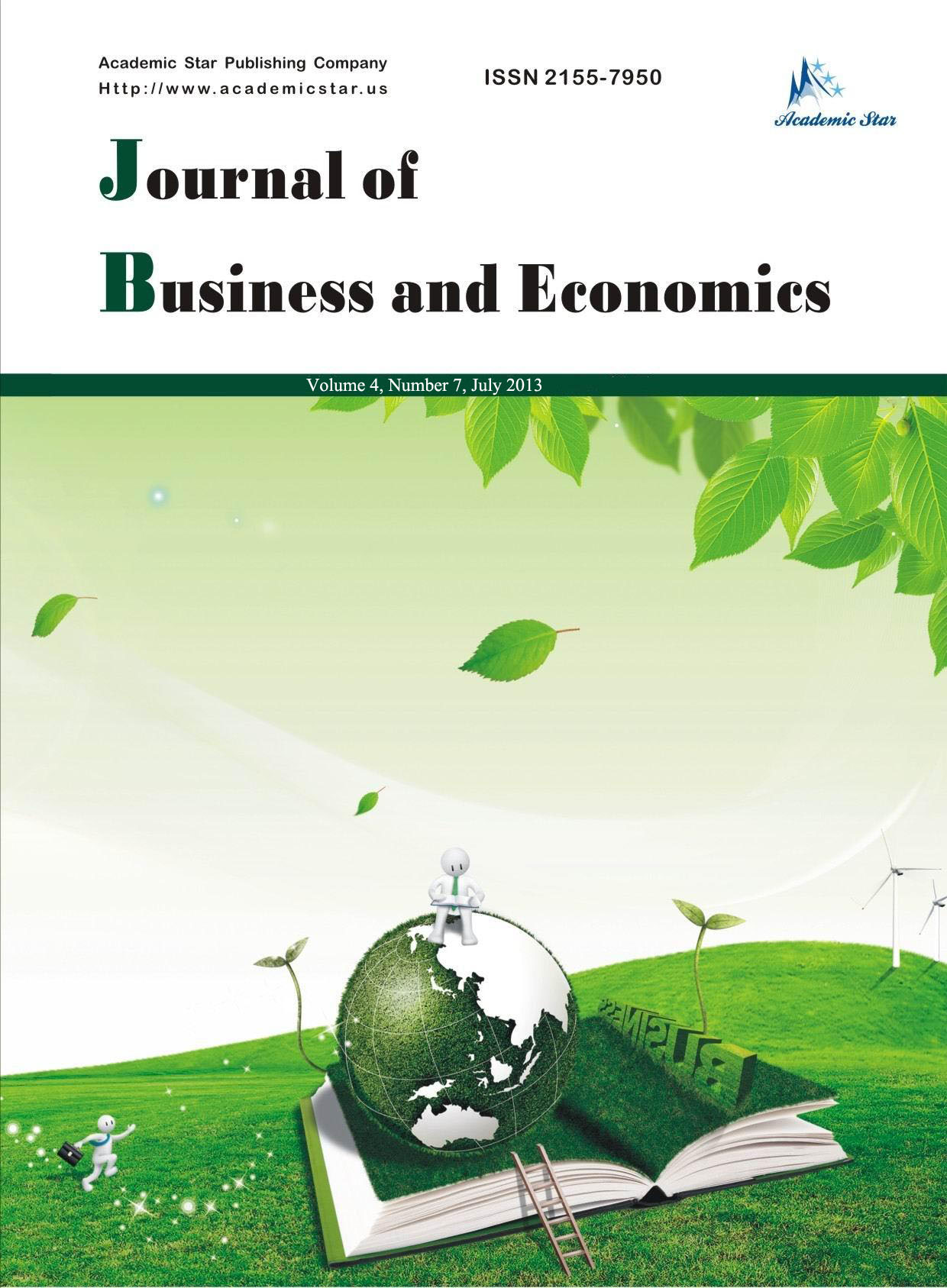Economics

- ISSN: 2155-7950
- Journal of Business and Economics
The Social and Economic Influence of Regional Newspapers
in Troubled Times
Gary Graham, John Hill, Hwanho Choi
(Manchester Business School, CRESC, the University of Manchester, Manchester M15 6PB, UK)
Abstract: Newspapers are operating in increasingly competitive and fragmented markets for audiences and advertising revenues. Web 2.0/social media is changing radically the ways in which newspapers and media business functions and struggles for profitability. Our research sought to answer the question of how Web 2.0/social media is impacting on the social and economic influence of regional newspapers. To answer this question we conducted a focus group of news media organizations in the London area. We blend together conceptual media/cultural economist writings on regional newspapers with focus group research findings in order to develop a theoretical model. The findings showed that in spite of initial fear and rejection, the internet is now firmly embedded in newspaper industry supply chain operations. Firms are now using the internet as an operant resource and working proactively with consumers to develop new forms of relationship value. We highlight the role of consumers in the creation of news (editorial) content and consumer-driven moves toward a merged media platform of distribution (including television, online, mobile and printed forms). The paper concludes by suggesting that Web 2.0 requires the development of new business models and value chains rather than their protection. Our theoretical model implies that if newspapers are to keep their social and economic influence within their local community then local news can no longer be produced in a “one-size fits all” product form, but as service experiences supplied through clusters of suppliers including newspapers, local television stations, community radio, online community news services and bloggers/citizen journalists. Demand will come from both communities of Web 2.0 driven consumption together with highly individualized preferences for personalized news supply.
Key words: newspaper industry; value chain; business models; internet
JEL Codes: L8
References:
Advertising Association (2009), “UK media advertising expenditure 2008”, available online at: http://www.adassoc.org.uk/aa/index.cfm/adstats/, p. 1, 1st December, 2009.
Anderson, C. (2006), The Long Tail: Why the Future of Business is Selling Less of More, Random House Books, London.
Basch, C. E. (1987), “Focus group interview: An underutilized research technique for improving theory and practice in health education”, Health Education Quarterly, Vol. 14, No. 4, pp. 411-448.
Benkler, Y. (2006), The Wealth of Networks: How Social Production Transforms Markets and Freedom, Yale University Press, New Haven, Conn.
Clemons, E. and Lang, K. (2003), “The decoupling of value creation from revenue: A strategic analysis of the markets for pure information goods”, Information Technology and Management, Vol. 4, No. 2/3, pp. 259-287.
Domingo, D., Quandt, T., Heinonen, A., Paulussen, S., Singer, J. B. and Vujnovic, M. (2008), “Participatory journalism practices in the media and beyond: An international comparative study of initiatives in online newspapers”, Journalism Practice, Vol. 2, No. 3, pp. 326-341.
Eisenhardt, K. (1989), “Building theories from case study research”, The Academy of Management Review, Vol. 14, No. 4, pp. 532-550.
Ferrary, M. (2003), “The gift exchange in social networks of Silicon Valley”, California Management Review, Vol. 45, No. 4, pp. 120-138.
Howe, J. (2008), Crowdsourcing: Why the Power of the Crowd is Driving the Future of Business, Crown, New York.
Krueger, R. A. and Casey, M. A. (2000), Focus Groups: A Practical Guide for Applied Research, Sage Publications, Thousand Oaks,
CA.
Li, C. and Bernoff, J. (2008), Groundswell: Winning in a World Transformed by Social Technologies, Harvard Business Press, Boston.
Mersey, R. (2009), “Online news users’ sense of community: Is geography dead?”, Journalism Practice, Vol. 3, No. 3, pp. 347-360.
Meyer, P. (2004), The Vanishing Newspaper: Saving Journalism in the Information Age, University of Missouri Press, Columbia and London.
Meyer, P. (2008), “The elite newspaper of the future”, American Journalism Review, Oct./Nov., pp. 32-35.
Mintel (2007), “Regional newspapers”, Mintel Report, Mintel, London.
Nonaka, I. and Konno, N. (1998), “The concept of ‘Ba’: Building a foundation for knowledge creation”, California Management Review, Vol. 40, No. 3, pp. 40-54.
Pincus, W. (2009), “Newspaper narcissism: Our pursuit of glory led us away from readers”, Columbia Journalism Review, available online at: http://www.cjr.org/archive, 1st June, 2009.
Sawhney, M. and Prandelli, E. (2000), “Communities of creation: managed distributed innovation in turbulent markets”, California Management Review, Vol. 42, No. 4, pp. 24-54.
Tapscott, D. (2008), Grown Up Digital, McGraw Hill, New York.
Thurman, N. and Myllylahti, M. (2009), “Taking the paper out of news: A case study of Taloussanomat, Europe’s first online-only newspaper”, Journalism Studies, Vol. 10, No. 5, pp. 691-708.
Trinity M. (2009), “Half yearly financial report for the 26 weeks ended 28 June 2009”, available online at: http://www.trinitymirror.com/ documents/2009%20Interim%20Announcement%20final.pdf, 21 May, 2009.
Vargo, S. L. and Lusch, L. S. (2006), “Service-dominant logic: what it is, what it is not, what it might be”, in: Lusch, L. S. and Vargo, S. L. (Eds.), The Service-Dominant Logic of Marketing: Dialog, Debate, and Directions, ME Sharpe, New York, pp. 43-56.






